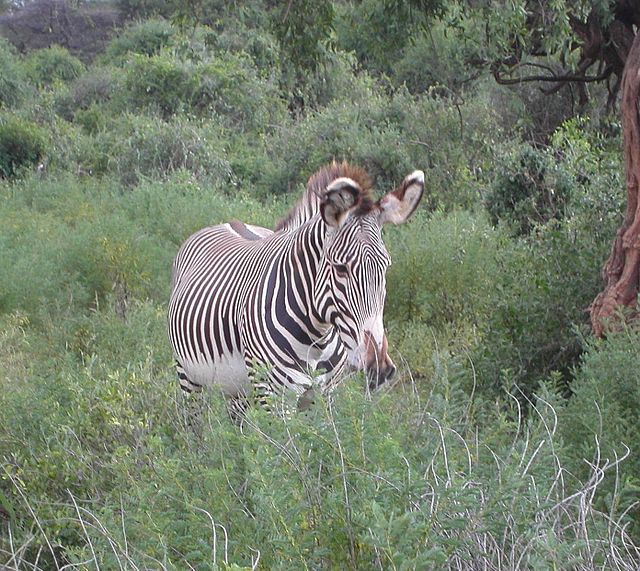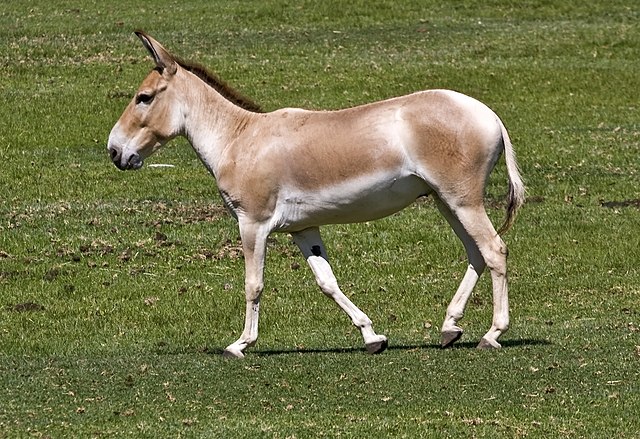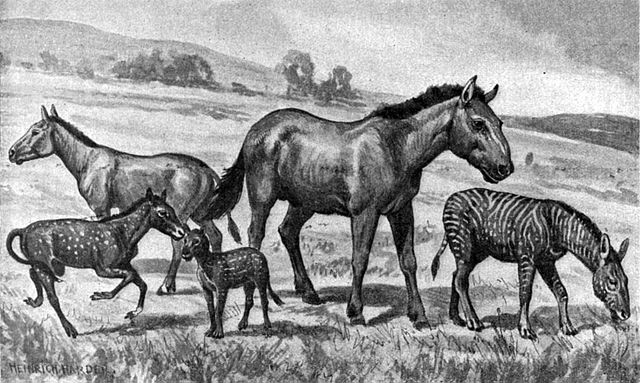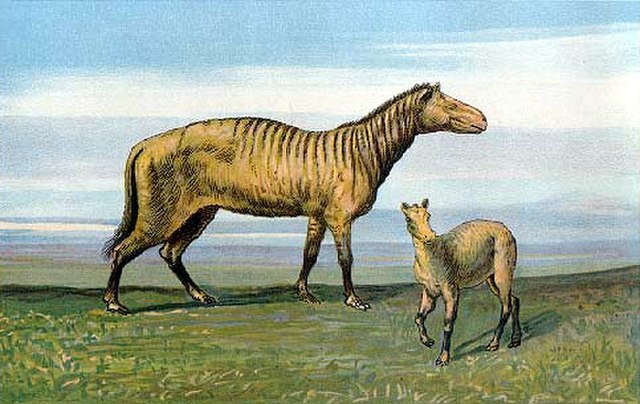Grévy's zebra, also known as the imperial zebra, is the largest living wild equid and the most threatened of the three species of zebra, the other two being the plains zebra and the mountain zebra. Named after Jules Grévy, it is found in parts of Kenya and Ethiopia. Superficially, Grévy's zebras' physical features can help to identify it from the other zebra species; their overall appearance is slightly closer to that of a mule, compared to the more "equine" (horse) appearance of the plains and mountain zebras. Compared to other zebra species, Grévy's are the tallest; they have mule-like, larger ears, and have the tightest stripes of all zebras. They have distinctively erect manes, and more slender snouts.
Grévy's zebra
From left to right: a cranium, a complete skeleton, a left forefoot frontal, and a left forefoot lateral from a Grévy's zebra
Zebra in dense brush
Herd of zebras
Equidae is the taxonomic family of horses and related animals, including the extant horses, asses, and zebras, and many other species known only from fossils. The family evolved around 50 million years ago from a small, multi-toed ungulate into larger, single-toed animals. All extant species are in the genus Equus, which originated in North America. Equidae belongs to the order Perissodactyla, which includes the extant tapirs and rhinoceros, and several extinct families.
Equidae
Extinct equids restored to scale. Left to right: Mesohippus, Neohipparion, Eohippus, Equus scotti and Hypohippus
Skeletons
Protorohippus








